Catch And Release Is It’s Own Reward
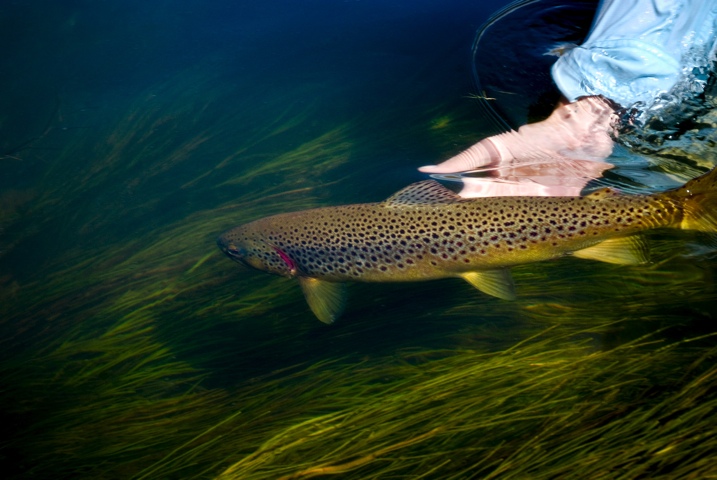
By Louis Cahill
I SPENT A WEEK LAST YEAR AT THE PENLAND SCHOOL FOR CRAFT, TEACHING A CLASS ON BAMBOO ROD MAKING.
I was having dinner in the dining hall one evening with ten or so folks I’d never met. Eating with new folks every night is a sort of tradition at Penland and it’s a lot of fun. Every one was curious about fly fishing so I was answering questions and generally being the ambassador for all things fish related. It came up that I practice pretty strict catch and release. A woman at the table stated, more than asked, “what is it with you fly fishermen? If I’m going to go to all the trouble to catch a fish, I’m gonna eat it! What’s wrong with you?”
I am often honest to a fault and with out thinking I answered, “fish are, I think, the most beautiful creatures that live. Every one is unique. I think that’s the real reason I fish. Just to hold them and look at them. If I didn’t fish I’d never get to do that. I like to eat fish but I guess I just don’t have it in me to kill something that beautiful. ” When I stopped talking the table was silent and everyone was looking at the woman. It was uncomfortable at best. “Oh fine”, she exclaimed, “I feel just great now” and left the table. I didn’t mean to come down hard on her. It was a sincere answer and she did ask. Frankly it kind of shocked me that everyone else didn’t see it the same way.
Last year I had the pleasure of teaching my oldest friend to fly fish. He was so excited when he caught his first fish, a beautiful little brook trout.
Read More »Spotting Big Trout in all the Wrong Places

One of my home waters that I spend 500 plus hours a year guiding on is notorious for big fish holding in water that most people would consider horrible trout water. I’m talking about water that is less than a foot deep that even veteran anglers would regularly walk by without fishing. The other day guiding I spotted a huge hooked jaw male rainbow pushing 30 inches. It was sitting in plain view on a gravel bar in six inches of water hugged up against the edge of a rhododendron. My partner and I watched the fish feeding regularly for about five minutes, while we planned out our spot and stock. I had seen big fish laying in this shallow gravel bar in the past many times, but nothing this size. Here’s the ironic part, right before we had approached the spot I had just explained how important it was to scan the water, even ridiculous looking shallow water before making a cast in the chances we might spot a big fish.
Heavily pressured fish are smart and often sneaky. I truly believe big trout will
Read More »Light, Composition and Action
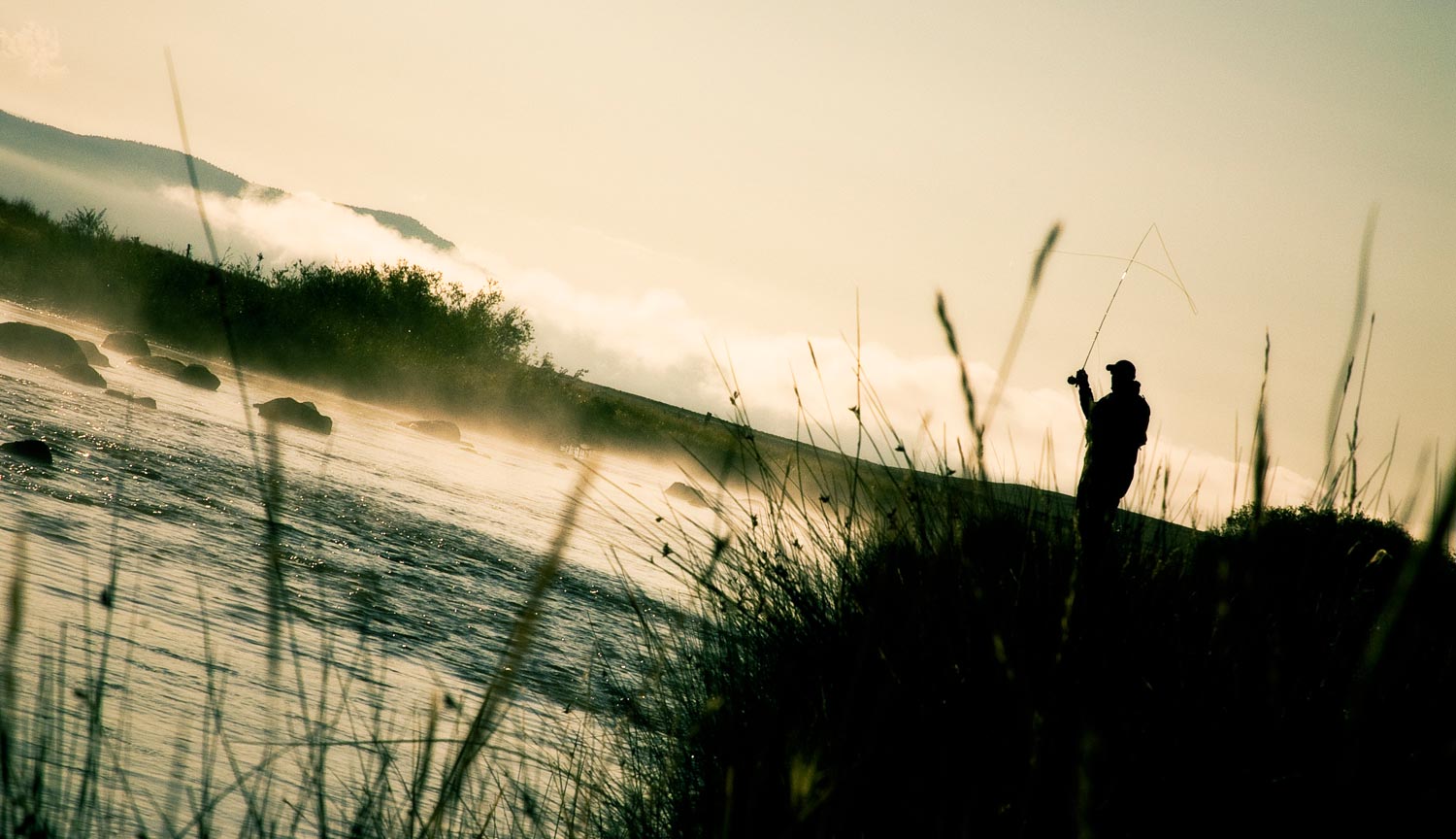
THERE ARE A LOT OF ELEMENTS TO A SUCCESSFUL PHOTOGRAPH. MANY ARE TECHNICAL, BUT THE MOST IMPORTANT ARE AESTHETIC.
A technically perfect image is worthless if it doesn’t capture the eye, and the imagination, of the viewer. Unfortunately, most new photographers get so wrapped up in the science of photography that they totally miss the art. There are as many aesthetic choices to be made when shooting a photo as when building a house but a hell of a lot less time to make them. It takes time and experience to master designing a photo on the fly but to help you get started there are three element so crucial to a great photo that they deserve your attention every time you lift the camera. They are: light, composition and action.
Light
Light sets the mood. When you sit down for a romantic dinner do you turn on the overhead fluorescents? No, you light a candle. When the police interrogate a suspect do they do it by candle light? Probably not. Of all the choices you make, light has the biggest impact on the emotional tone of the finished photograph.
You may be thinking, “How is light a choice?” I have been a studio photographer for more years than I like to discuss. In the studio I control my lighting by moving the position of my lights and changing their intensity. Shooting on the river you don’t have that luxury but you do still have choices. You can’t move the sun, but you can
Read More »Improving Your Water Haul Cast
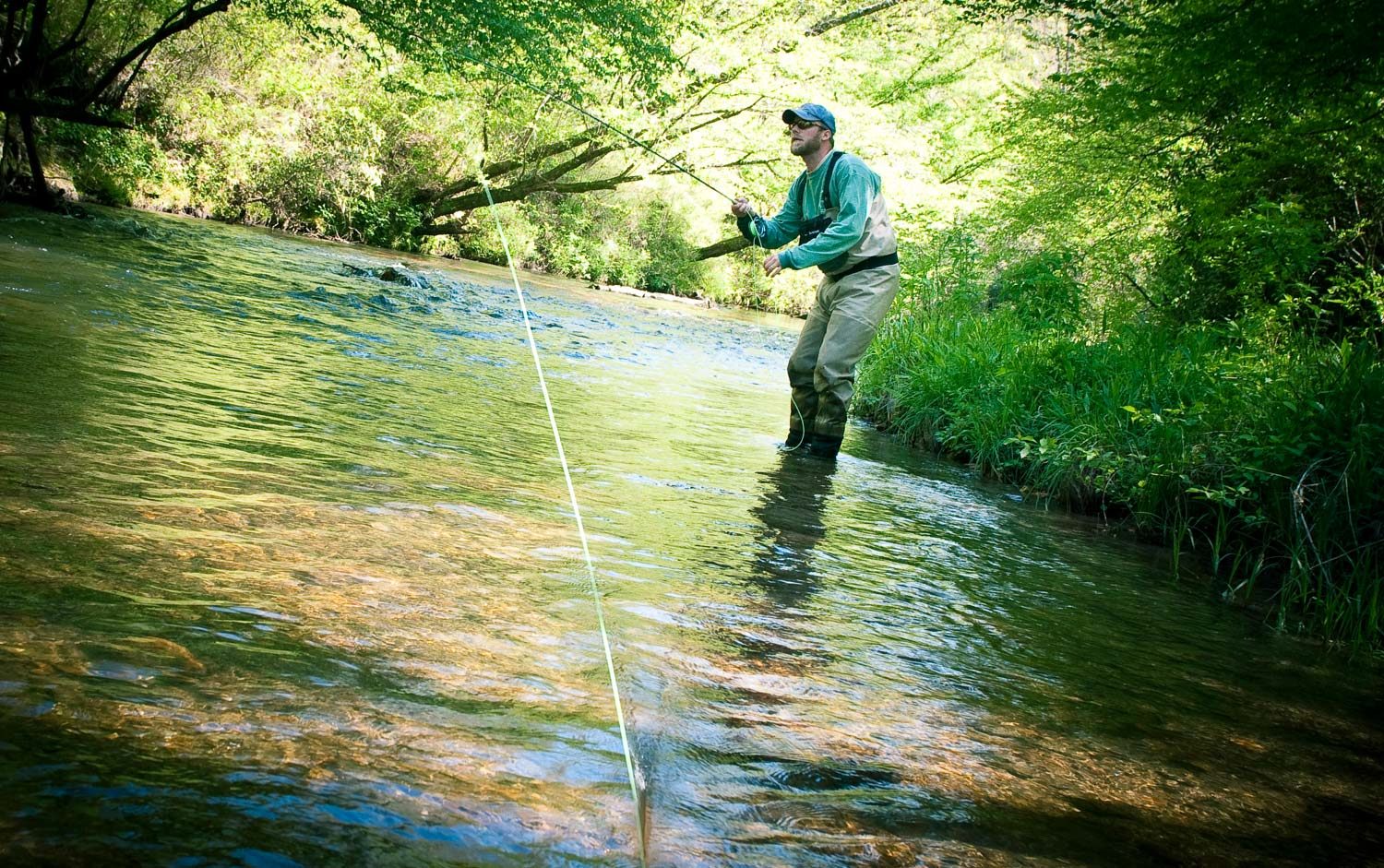
By Justin Pickett
Fly-Fishing around tight canopy can prove challenging, and, here in the southeast, there is plenty of it.
Rhododendrons dominate the banks, along with wise, old Hemlocks, Oaks, pines, and many other bushes, shrubs, grass, and flowering flora. Because of this, I often do my best to take them out of the equation by changing my casting technique to best suit each situation.
One of the casts that I use most often, when tight banks and overhead canopy are staring me down, is the water haul cast. It’s the perfect cast for keeping you out of trouble for a few good reasons. For one, It takes the back cast completely out of the equation, eliminating the possibility of getting hung up in the trees and bushes that lurk behind you. As well as keeping your cast close to the water’s surface, which keeps you relatively safe from most overhanging obstacles. On the other hand, if not executed correctly, the water haul can prove frustrating and getcha worked up in a hot minute.
When it comes to mistakes made with the water haul, there are a handful of problems that I see consistently when I’m guiding clients.
PROBLEM: YOUR CAST IS PILING UP AND IS WELL SHORT
During the passive phase of the water haul, you are allowing the flow of the water to straighten your fly line and leader, downstream from you, which pulls against your line, leader, and flies which transfers energy to the rod blank. This step loads the rod and gives you the stored energy needed to make the cast. What I see happen most often is that when the angler begins to make their cast, the rod loads up and then slingshots forward, but the flies only sling a few feet out of the water, or maybe not at all.
The first thing that often happens here is that during the time it takes to straighten your rig and load the rod, your flies fall to the bottom of the streambed, and if you’re fishing with an indicator or a dry fly, the hydraulic force of the water presses the indicator/dry fly into the water’s surface, if not below the surface. When this happens, the water flow is creating more resistance and energy than you have stored in your rod. The end result is often what I described above. The energy stored in the rod isn’t enough to overcome the forces of the water against your rig and your flies aren’t able to well…fly. The solution to this issue is simple, though. As you prepare to straighten your rig, move your rod tip a few more inches downstream and let it come tight. As you become ready to cast, raise your rod tip slightly and move your rod tip forward those few inches that you added on. This will bring your flies up in the water column, greatly reducing the water’s resistance against them. If you are fishing with a dry (especially larger flies) or an indicator (especially thingamabobbers), focus on trying to “skate” them across the water for a few inches before attempting your cast. This breaks much of the surface tension and allows for an easy, well executed cast.
The second reason that your flies will pile up while attempting a water haul is because
Read More »Cut A Dovetail Every Day

Woodworking has taught me a few things about fly fishing.
Before Gink and Gasoline I was, for a time, very involved in the world of woodworking. I was fortunate to photograph and spend time working with some of the most talented folks in the field, many of them are still great friends. I still build my own furniture, in fact I just finished making a new set of cabinets for my kitchen, but it’s a hobby, not a job.
It was the early 2000s when I met Frank Klausz, a Hungarian-born furniture maker working in New Jersey. Frank specialized in high-end custom furnishings and reproductions and wrote books and magazine articles as well as instructional DVDs. An old world craftsman with a sterling work ethic and a great sense of humor, his name will be familiar to anyone who has studied the craft.
Frank is specifically known for his hand cut dovetail joinery. For many, hand cutting dovetail joints is the skill which separates the hobbyist from the artist. It is the kind of skill that’s bedeviling to master, while the master makes it look almost automatic. I had hand cut a few projects before I met Frank, but he was the one who really turned the lights on for me.
Cutting a perfect joint is really a matter of hand skill and muscle memory, much like fly fishing. There is some theory you need to understand but when it comes down to it, your hands must function independently from your head. The only way to achieve that is by repetition.
“I couldn’t really cut dovetails until I cut three-hundred for one project,” Frank told me.
“Cut a dovetail every day for a year and you’ll never have to think about it again.”
That advice ended up being a life lesson. I didn’t make it a whole year, but I cut
Read More »A Threaded Discussion: Video
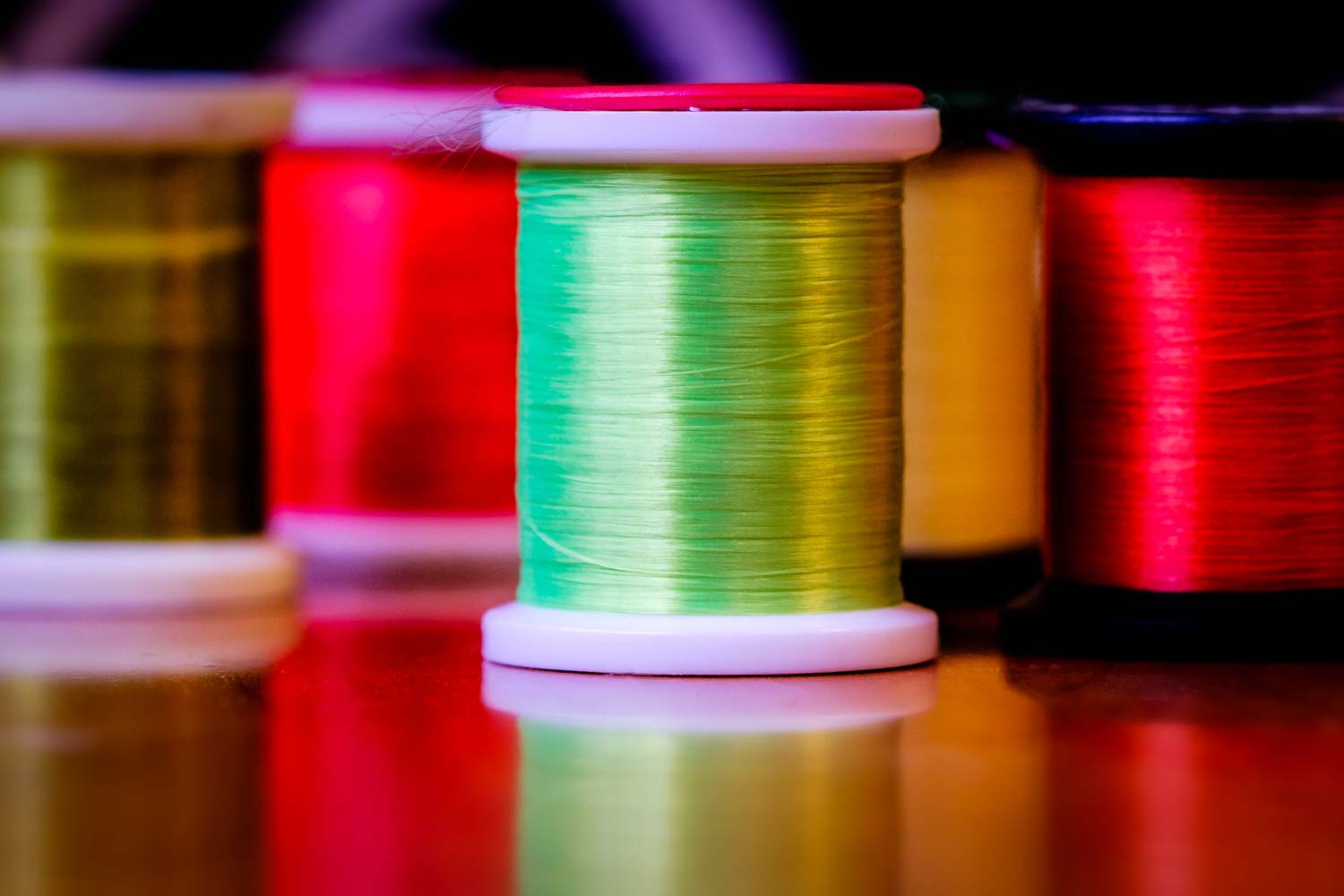
by Bob Reece
What’s the best thread for fly tying?
One of the benefits of social media is its ability to open lines of communication. I frequently receive pictures of various fly patterns that people have tied. In tandem with these photos, I’m often asked for my thoughts on how to improve the quality of the shared pattern. My first point of emphasis usually lands on a thread related element.
In general, as the fly size decreases so should the diameter of the thread. This is essential knowledge for any tier that is looking to create a higher quality product. All threads are broken in to sizes ranges. The two most commonly referred to sizing categories are Aught and Denier.
Threads measured in the Aught range are best used for patterns that do not require smoothly built up thread bodies or other portions of the fly. This is due to the fact that these threads do not lay as flat when wraps are laid down. For this category a larger number signifies a smaller diameter thread. For example a 14/0 thread has a smaller diameter than an 8/0. Due to advancements in thread technology, even smaller diameter Aught threads can display exceptional strength.
In a turnabout with Denier threads, a larger measurement number signifies a thicker diameter thread. For example
Read More »Nobody Wants To See Your Rotting Corpse

THIS IS WHY MY HERO SHOTS WILL ALWAYS LOOK BETTER THAN YOURS!
I try not to do this. To give up on a well-reasoned argument and turn to an angry rant, but once in a while I can’t help myself. I’m sick and tired of opening Facebook and seeing photos of a dead fish and some grinning asshole. You’re not a hero and that’s not a hero shot.
Fish are beautiful, living creatures and like all living things they are only beautiful when they are alive. Nobody wants to see a photo of your dead girlfriend and I don’t want to see a photo of your dead fish. It’s a corpse, not a trophy.
The color starts to leave a fish as soon as you lift them from the water. I know this because photographing fish is my job. Ten seconds. That’s all the time it takes to photograph a fish. Lift, snap, dunk, repeat. That’s how you do it. Ten seconds at a time. And then let the damned thing go!
I saw a video on YouTube the other day. The guy was talking about catching his biggest brown trout. It was back in the days of film and he said, “I hated to kill it but I had to. I was out of film.” No! You didn’t have to, you self-centered moron! Do you have Alzheimer’s? Were you going to forget catching that fish? Or are you such a lying douche bag that no one believes you anymore?
Killing a trophy fish does not make you cool. It makes you a dirt bag!
photo-3You know what else doesn’t make you cool. Your name in the record books. Nope. Not cool. Neither is “landing” a tarpon on 12 lb test. Here’s a photo of
Read More »Beating the Winter Blues
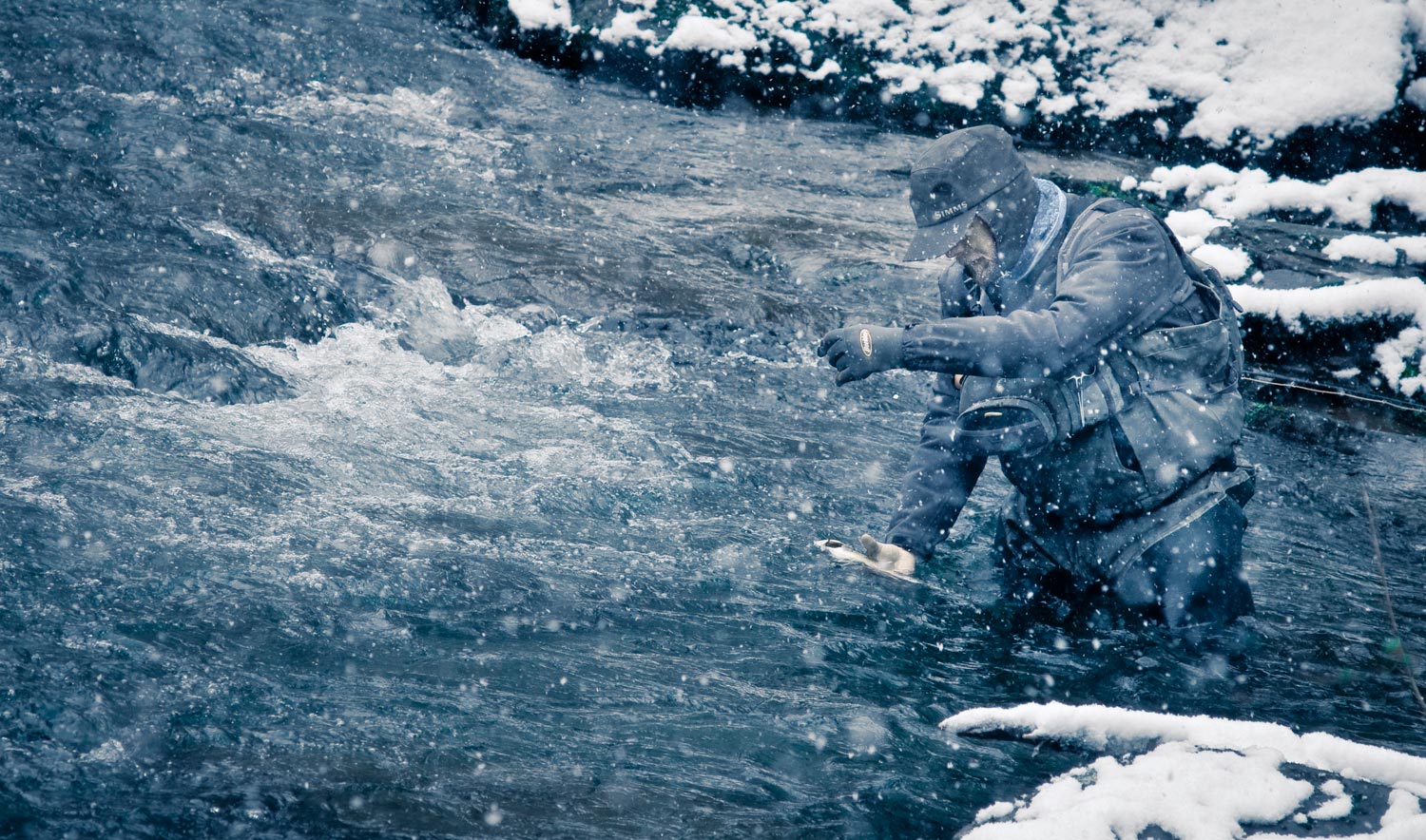
By Kevin Howell
AS I TRAVEL AROUND TO FISHING SHOWS I OFTEN HEAR PEOPLE TALKING ABOUT WANTING TO GET ON THE STREAM AND GO FISHING ONCE IT WARMS UP.
In reality, some of the best fishing of the year, here in the Southern Appalachians, takes place in the winter. Here are some ideas to help you get through the winter blues.
Fish in the winter. Winter fishing in our part of the country is fabulous. I agree, on days when it is 22 degrees and blowing blue snow, you probably do not want to go fishing. However, we have plenty of days when the air temps will hit the high 40’s to low 50’s and it makes a nice day to get out of the house. Remember a trout has to eat to survive, and you can not catch him if you are sitting on the couch.
Tie Flies. Another great way to pass the time is to tie flies. If you are new to tying or want to learn how to tie, then hang out at your local shop and take some tying classes. A lot of stores like Davidson River Outfitters even offer free or low cost classes or nights you can just come into the shop and hang out and tell fish stories.
Build a rod. Again if your local shop or fly fishing club offers a rod building class you can build your own rod and customize it in any manner you like, except for Tarheel Blue (sorry, I went to NC State).
Take a Trip. If you can afford it, take a trip. It does not have to be a $10,000 around-the-world trip. You could go to south Florida or Louisiana for a day or two and go Redfishing. You could go to south Texas and fly fish for bass. You could go to North Georgia and fish the Toccoa tailwater and camp overnight in a public campground for $2. If you want to go to Argentina or New Zealand, or the tropics like the Bahamas or Christmas Island, you can find a lot of good deals at the moment due to
The Right Stuff: Video
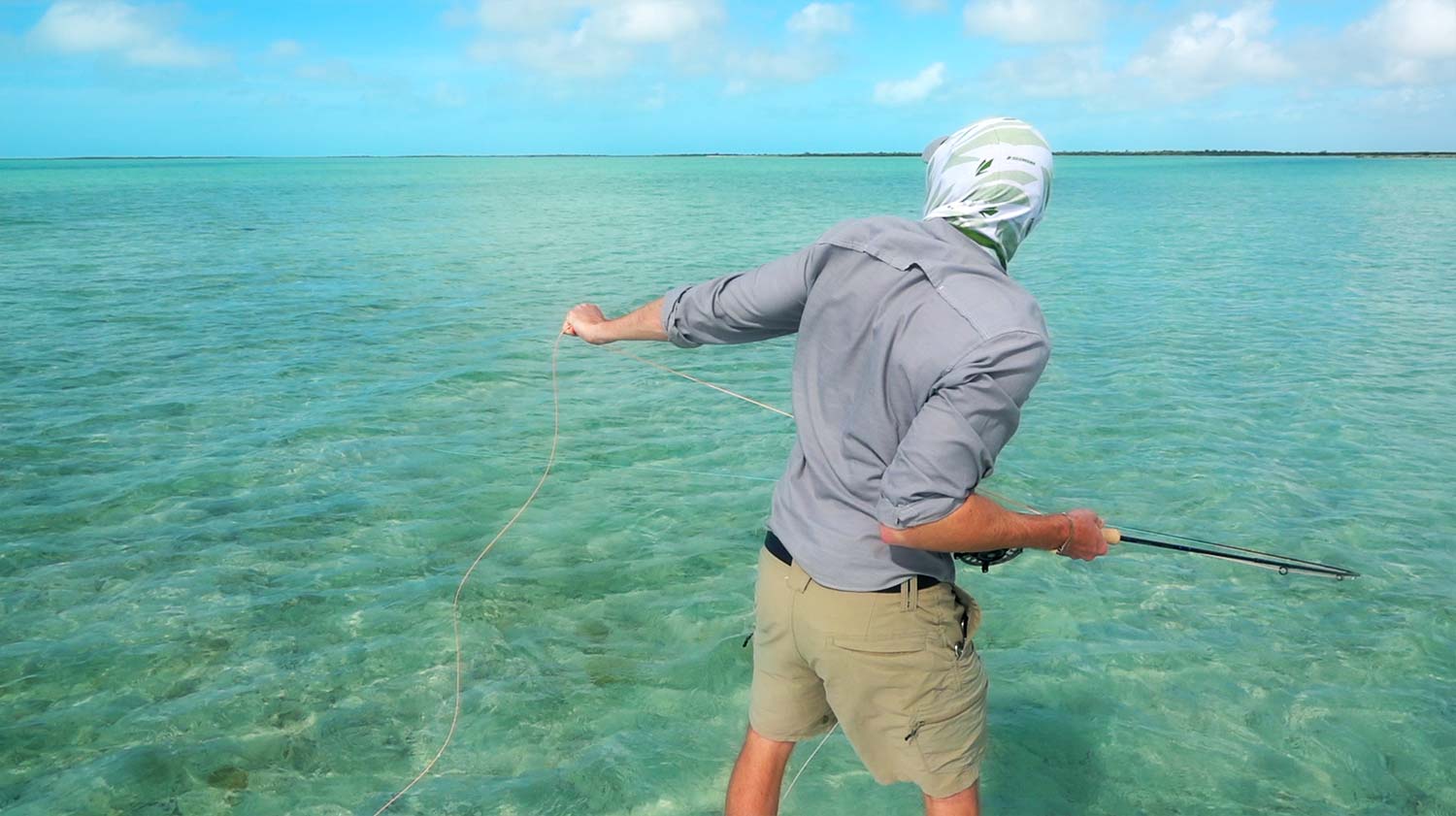
You know that feeling when you hook a fish and everything goes wrong?
I saw that play out just recently, and I saw a great, if not unconventional, recovery. I was fishing with Jesse Lowry on South Andros. Jesse hooked a nice bonefish and things went sideways. The fish ran straight at Jesse and there was no way he could take up line fast enough. When the reel couldn’t catch up, he went to stripping and then he couldn’t strip fast enough.
Most anglers would have lost it at that point. I’ve seen it a hundred times and most folks just watch it happen, but not Jesse. You could see his determination. He wanted that fish. He reached out and caught hold of the slack line outside the rod tip and hand lined the fish. It was hysterical, and effective.
Jesse landed the fish but when he tried to lift it for a photo the fish had other plans. He flipped out of Jesse’s hands to freedom. Jesse made one more attempt to grab the fish out of the water and it showed him up by swimming right between his feet. That guy does not give up and I respect that in an angler. That’s the right stuff.
I WAS LUCKY TO CATCH THE WHOLE THING ON VIDEO!
Read More »Fast Pocket Water & Big Attractor Dry Flies
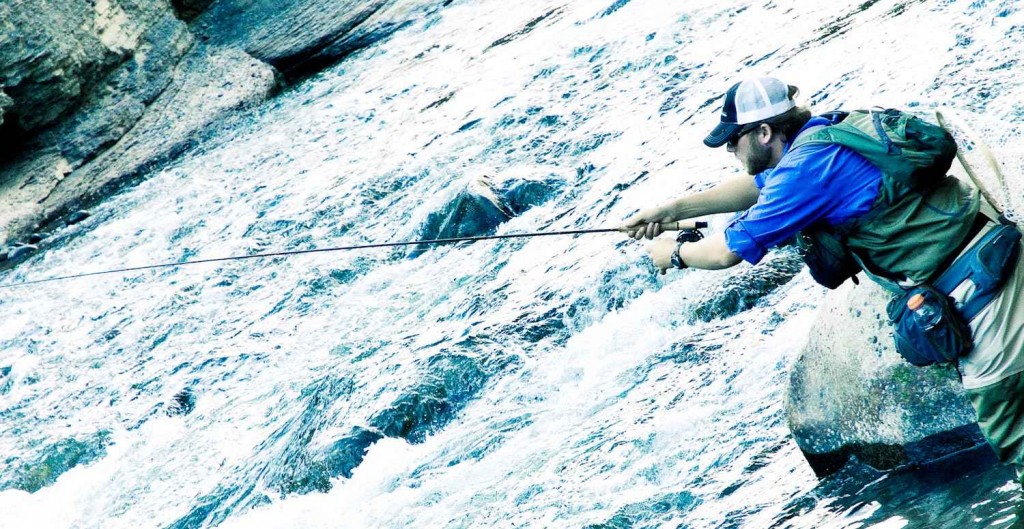
During the spring, summer and fall I often get the itch to forget about catching numbers and instead see how big of an attractor dry fly I can get away with fishing and still fool trout.
For those of you who don’t know, my closest trout waters are North Georgia and Western North Carolina. We don’t regularly fish giant attractor dry fly patterns, like lots of my western friends do, because most of our water just won’t yield much results. That’s whats so cool about the idea of fishing them, when most anglers would chastise you. It gives me a little extra reward fishing patterns out of place and still catching fish. My favorite trout water for doing this on are medium-sized streams, particular in gorge sections that have a steep stream gradient. This type of water generally is loaded up with pocket water, and that’s perfect trout water for fishing big attractor patterns. Most of the trout found in these stretches of water are forced to be opportunistic feeders. The fast and turbulent water don’t give them a lot of time to examine their food before it’s out of their reach.
I’ll never forget an epic day of fishing in western North Carolina last year, fishing a size 6-8 Royal Wulff. I caught some really nice brown and rainbow trout that day, and I chuckled inside as I got weird looks from other locals on the stream, as they watched me drifting unusually large dry flies. They must have thought I was a
Read More »